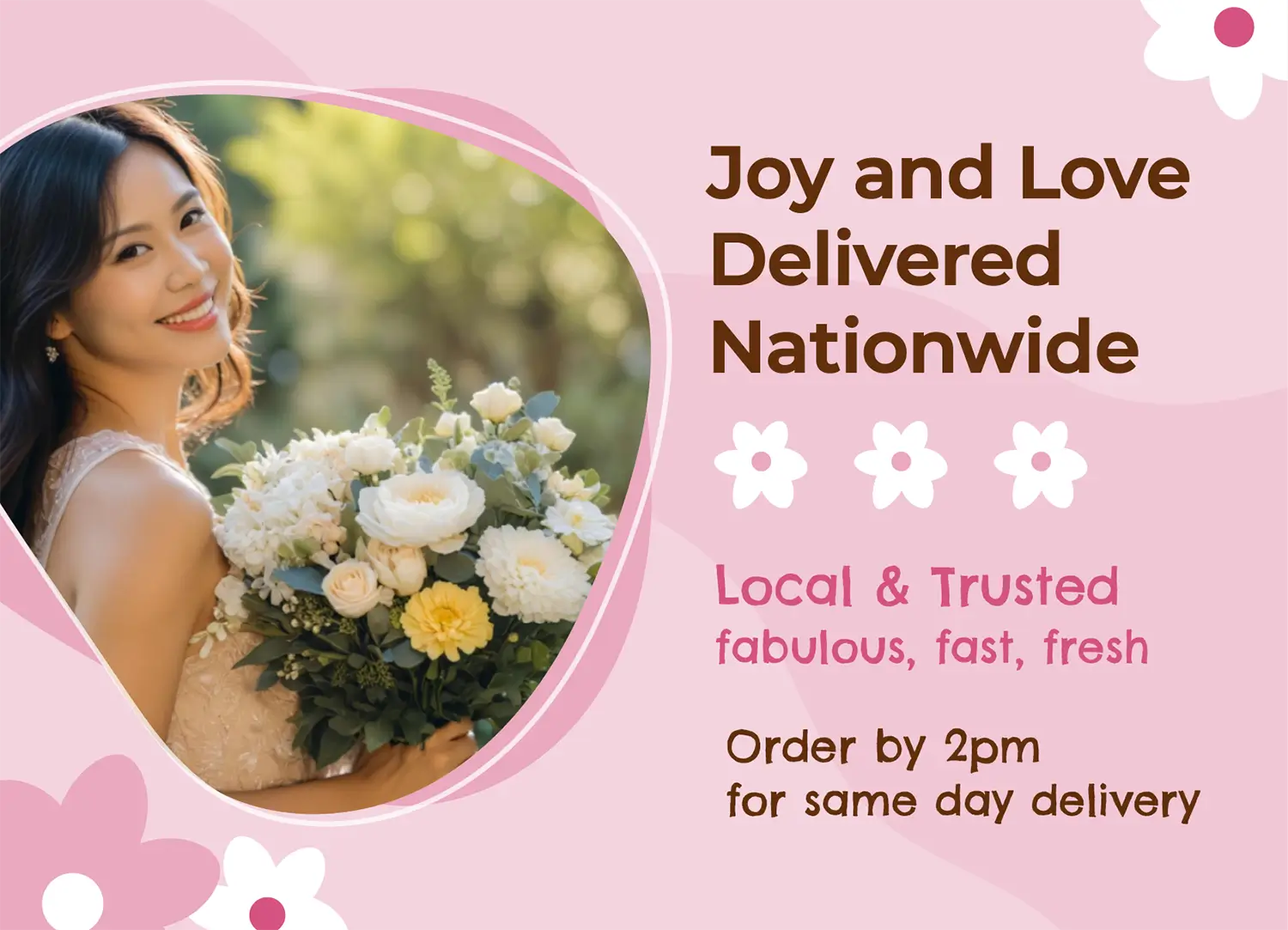

ZAMBOANGA CITY BEST SELLERS
-
Available Tomorrow: 28 Jun
Luxury 12 Red Roses
Regular price ₱4,289Regular priceUnit price / per -
Available Tomorrow: 28 Jun
Luxury Two Dozen Red Roses
Regular price ₱6,599Regular priceUnit price / per -
Available Tomorrow: 28 Jun
Luxury 6 Roses Giftbag
Regular price ₱3,299Regular priceUnit price / per -
Available Tomorrow: 28 Jun
Pastel GiftBox
Regular price ₱3,079Regular priceUnit price / per -
Available Tomorrow: 28 Jun
Wild About You
Regular price ₱3,299Regular priceUnit price / per -
Available Tomorrow: 28 Jun
Pink Sunshine
Regular price ₱1,999Regular priceUnit price / per -
Available Tomorrow: 28 Jun
Forever Red
Regular price ₱2,639Regular priceUnit price / per -
Available Tomorrow: 28 Jun
Blush & Bloom
Regular price ₱2,199Regular priceUnit price / per -
Available Tomorrow: 28 Jun
Luxe Germini
Regular price ₱2,089Regular priceUnit price / per -
Available Tomorrow: 28 Jun
Eternal Love
Regular price ₱2,309Regular priceUnit price / per -
Available Tomorrow: 28 Jun
Sweet Embrace
Regular price ₱2,749Regular priceUnit price / per -
Available Tomorrow: 28 Jun
Blazing Beauty
Regular price ₱2,199Regular priceUnit price / per -
Available Tomorrow: 28 Jun
Carnival Gift-Bag
Regular price ₱3,079Regular priceUnit price / per
ZAMBOANGA CITY
Zamboanga City and Its Flourishing Flower Culture
Zamboanga City, known as the "City of Flowers," is a vibrant and diverse urban center in the southern Philippines. Rich in history, culture, and natural beauty, Zamboanga's moniker is a testament to its deep-rooted connection with flowers. This article delves into the unique flower culture of Zamboanga City, exploring its historical significance, cultural importance, and economic impact.
A Blossoming History
Zamboanga City's flower culture dates back to its early days as a significant trading port. The city’s strategic location along the trade routes brought a variety of influences, including horticultural practices from different cultures. The name "Zamboanga" itself is derived from the Malay word "jambangan," meaning "place of flowers," highlighting the city's longstanding association with floral beauty.
Cultural Significance of Flowers
Flowers play a central role in the cultural and social life of Zamboanga City. They are not only used for decoration but also hold symbolic meanings in various aspects of life.
In religious celebrations, flowers are an integral part of ceremonies and festivals in Zamboanga. During events like the Feast of Nuestra Señora La Virgen del Pilar, the city’s patroness, floral offerings are made in honor of the Virgin Mary. Churches and religious icons are adorned with vibrant blooms, enhancing the spiritual atmosphere.
Traditional festivals also prominently feature flowers. The Hermosa Festival, also known as Fiesta Pilar, is Zamboanga's most celebrated event. Held every October, it features a colorful parade, street dancing, and cultural performances. Floral decorations and floats are prominent during the festival, showcasing the city's rich heritage and artistic flair.
In social gatherings such as weddings, flowers are essential in creating a beautiful and meaningful atmosphere. Traditional arrangements often feature local flowers, adding a touch of natural elegance and symbolizing love, purity, and prosperity.
Economic Impact of the Floral Industry
The floral industry in Zamboanga City is a significant contributor to the local economy. The city's favorable climate and fertile soil create ideal conditions for cultivating a wide variety of flowers.
Flower farming is a vital part of the city's economy, with numerous flower farms in the outskirts supplying both local and regional markets. Popular flowers grown in Zamboanga include roses, orchids, anthuriums, and heliconias. These farms provide livelihoods for many families and contribute to the agricultural sector's growth.
Floral markets in Zamboanga City are bustling with activity, where vendors sell fresh blooms daily. These markets cater to the needs of local florists, event planners, and individual buyers. The availability of a wide range of flowers ensures that there is always something for every occasion.
The high quality of Zamboanga's flowers has opened up opportunities for export. Local growers are increasingly supplying international markets, enhancing the city's reputation as a key player in the floral industry.
Promoting Environmental Sustainability
The flower culture in Zamboanga City is not only about beauty and economy but also about sustainability. Local initiatives promote environmentally friendly practices in flower farming and gardening.
Many flower farms in Zamboanga are adopting organic farming techniques to reduce the use of harmful chemicals. This approach ensures that the flowers are not only beautiful but also safe for the environment. Urban gardening projects are becoming popular in Zamboanga, with community gardens springing up in various neighborhoods. These gardens promote green spaces in the city, provide residents with fresh flowers and produce, and foster a sense of community.
Efforts to conserve native plant species are also underway, with botanical gardens and research institutions working to preserve Zamboanga’s floral diversity. These initiatives help protect the city's natural heritage for future generations.
Zamboanga City's flower culture is a vibrant tapestry woven from its historical roots, cultural traditions, and economic activities. Flowers are more than just decorations in Zamboanga; they are symbols of the city's identity, resilience, and commitment to sustainability. From religious ceremonies and traditional festivals to thriving flower markets and conservation efforts, the importance of flowers in Zamboanga City is a testament to the enduring beauty and significance of this "City of Flowers." Whether you are a resident or a visitor, the floral charm of Zamboanga is sure to leave a lasting impression.
















